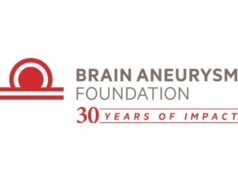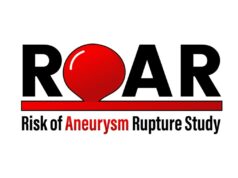 A retrospective study from China has concluded that the Pipeline Flex embolisation device (Medtronic) is safe and effective in the treatment of complex intracranial aneurysms. Reporting their results in Nature: Scientific Reports, Shun-Qiang Chen (Henan Provincial People’s Hospital, Zhengzhou, China) and colleagues state that the Pipeline Flex—a second-generation flow diverter—was associated with a high complete occlusion rate, decreased complication rate, and good prognosis rate at medium follow-up.
A retrospective study from China has concluded that the Pipeline Flex embolisation device (Medtronic) is safe and effective in the treatment of complex intracranial aneurysms. Reporting their results in Nature: Scientific Reports, Shun-Qiang Chen (Henan Provincial People’s Hospital, Zhengzhou, China) and colleagues state that the Pipeline Flex—a second-generation flow diverter—was associated with a high complete occlusion rate, decreased complication rate, and good prognosis rate at medium follow-up.
“Although some individual studies have reported similar outcomes, we included [only] complex aneurysms in one study, and reported the treatment outcome as well as follow-up outcomes because of the large volume of patients in our hospital,” the authors write. “Our study contributes to a better understanding of use of the [Pipeline] device in treating complex intracranial aneurysms, in one large medical centre, with the same group of physicians.”
To investigate the safety and short-term effect of the device in the treatment of complex, unruptured intracranial aneurysms, Chen and colleagues conducted a retrospective study between February 2018 and September 2019. Patients with tiny, large, giant, wide-necked, tandem multiple and blood-blister aneurysms, confirmed on imaging, and treated with Pipeline Flex, were included.
A total of 131 patients (67% female, mean age 54.2 years) with 159 complex aneurysms were enrolled. The most common aneurysm location was the internal carotid artery (84.9%), followed by the vertebral artery intracranial segment (9.4%), middle cerebral artery (3.8%) and basilar artery trunk (1.9%). Some 24 patients (17.6%) had multiple aneurysms.
New Pipeline Flex data
Overall, 144 Pipeline Flex devices were all successfully deployed, with a stenting success rate of 100% and a mean operation time of 123.7 minutes. The authors report that Pipeline Flex was deployed alone in 107 aneurysms (67.3%) and combined with coiling to treat the remaining 52 aneurysms (32.7%).
All devices had “good coverage of the aneurysm neck, with good wall adherence and patent parent artery”, Chen et al note, adding that none of the patient population required the ‘massage technique’ or the ‘balloon expansion technique’ to make the Pipeline Flex adherent to the parent arterial wall.
At discharge from the hospital, modified Rankin scale (mRS) scores were as follows: mRS 0 in 101 patients (77.1%), mRS 1 in 25 (19.1%), mRS 2 in four (3.1%), and mRS 4 in one (0.8%). The upshot of this was a good prognosis rate (mRS 0–2) of 99.2%. In addition, periprocedural complications occurred in four patients (3.1%), three of which were ischaemic (2.3%) and one of which was haemorrhagic (0.8%). No deaths occurred, the authors note.
Clinical follow-up was carried out in 87 patients (66.4%) at a median of 28 months after the procedure. No new neurological symptoms were detected, with mRS scores of 0 in 78 patients (89.7%); 1 in five (5.7%); 2 in three (3.4%); and 4 in one (1.1%); being observed. As such, the rate of good prognosis at follow-up was 98.9%. A 1.1% incidence of worsening mRS was calculated—but, overall, no significant difference existed in mRS at discharge versus at clinical follow-up (p=0.16).
Angiographic follow-up was performed in 61 patients (46.7%) with 80 aneurysms (50.3%) at a median of 26 months after embolisation, revealing a complete aneurysm occlusion rate of 71.3% in 57 aneurysms (O’Kelly-Marotta [OKM] grade D) at a median of six months. No aneurysm recurrence was found, while asymptomatic in-stent stenosis occurred in four patients (6.6%), Chen et al report.
Study findings in context
Discussing their findings further, the authors assert that, while ischaemic complication events were “very low” in their study, prevention is “still needed”, and advocate measures including sensitivity testing of antiplatelet medications, application of tirofiban and insurance of good wall adherence with the Pipeline Flex device.
Chen et al also posit that the long-term effects of Pipeline Flex in intracranial aneurysms “have not been reported sufficiently”, but may have similar effects to those of the ‘classic’ Pipeline embolisation device—highlighting the fact that three large clinical studies of the latter have demonstrated a complete aneurysm occlusion rate of 75% at six months post-embolisation.
Touching on the use of coiling alongside Pipeline Flex, the authors reference six-month complete occlusion rates of 85.4% with coiling and 71.7% without in their study, and cite prior research to support their claim that Pipeline-plus-coiling aneurysm treatments are “safe and efficient, with no increased complications when compared to [Pipeline] embolisation alone”.
Chen et al point to the fact that the same group of physicians—with similar levels of procedural proficiency—treated all the aneurysm cases in their study, potentially leading to “greatly reduced” heterogeneity, as well as increased treatment efficiency and decreased complication rates. They also aver that the median clinical and imaging follow-up times of 28 and 26 months, respectively, are “longer than most other studies”.
“Despite this, our study had some limitations, including the retrospective and single-centre study nature; a small cohort of patients; Chinese patients enrolled only; no control; and no randomisation, which may all affect the [generalisability] of the outcomes,” the authors conclude. “Future randomised, controlled, multicentre clinical trials will have to be performed to resolve all these issues for better outcomes.”










